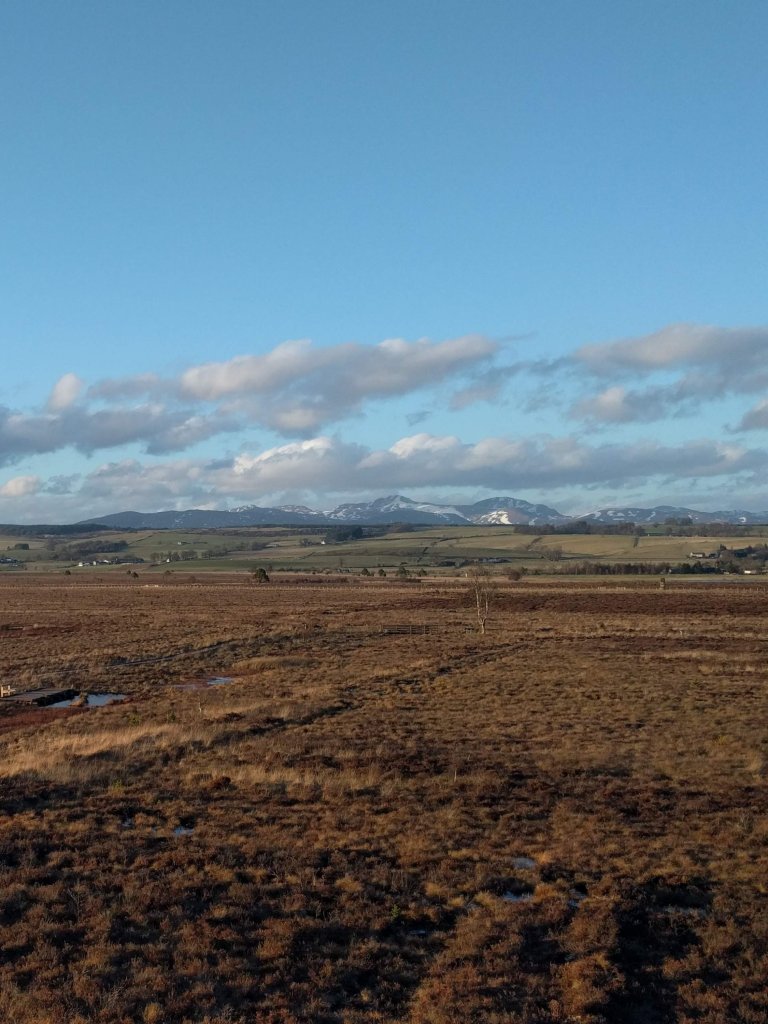Since returning to Stirling NNRs I have been thinking of content for the blog, which of course is a challenge as I need time to re-familiarize myself with the reserves, get up to speed with the up-coming projects we must do before the end of our financial year and plan for the next year!
So, for the next couple of blogs I will go back to basics as I familiarize myself with the reserves stories and share that with you. These blogs are for everyone, but the next few may be more suited for our new followers who have recently discovered our National Nature Reserves. So here goes, first up is………
Flanders Moss

The largest lowland raised bog habitat in the UK, 15km west of Stirling, this habitat is one of the most vulnerable and diminished habitats in the UK with only 5% of intact raised bogs left.
Flanders Moss was first declared a National Nature Reserve (NNR) in 1982, only consisting of 210ha of land on the Cardross Estate. Fast forward 10 years later (1992) Flanders Moss had its first reserve officer appointed and by 1996 we had issued our first 10 year management plan for how we would complete large scale peatland restoration, now covering an area of 821 hectors.
For Flanders Moss to have NNR status, there had to be a reason why it was of national interest. For many of our visitors, Flanders Moss NNR is the boardwalk and land you see from the viewing tower.

However, Flanders Moss NNR overlaps with several protected areas which create Flanders Mosses Special Area of Conservation (SAC) and Flanders Moss Site of Special Scientific Interest (SSSI) where the SAC consists of a cluster of separate bogs that are the remnants of one of the largest covering an area over 1073 hectares. Flanders Moss is only about 60% of its original size. Many of the series of raised bogs that formed along the Forth valley have now been completely removed or planted with conifers. Further information of these designated areas can be found searching on site link, Flanders Moss.
But how were raised bogs created in the first place? Well, let’s return to the last glaciation, around 22,000 year ago!
The sea level was lower than today and huge glaciers covered Scotland pushing the land downwards. As the climate warmed up and the glaciers melted around 15,000 years ago, the sea rose faster than the land, flooding the Carse of Stirling. Eventually as the land rebounded, the sea retreated leaving a layer of beach sands and silty estuarine muds. Mosses colonised the land surface, eventually forming a layer of peat.
Between about 11,500 and 12,900 years ago the climate chilled again and glaciers built up once more in the Highlands. One of these glaciers extended into the upper Forth Valley forming a prominent end moraine that extends from Menteith to Buchlyvie.
The sea then flooded inland around 9,000 years later and the Carse of Stirling once more became an extension of the Forth Estuary. The earlier land was buried by new mudflats, however near West Moss side farm the peat bog grew so fast that it remained above the sea level, forming one of several peat islands in the estuary.
But it didn’t stop there. Some 2,000 years later the sea retreated and peat accumulated again forming a network of bogs across the Carse of Stirling. We know this information as scientists have taken peat sample cores down through the sediment at a depth of 7 metres, and these cores have provided a time capsule of historic information where heavy metals, flowering plant pollen, moss spores and unicellular creatures preserve in the peat.





Now that I have quickly summarised how Flanders Moss was formed, the next blog post will share why Flanders Moss is special, what features makes the land designated and what we are trying to protect.
You may have already gathered the main habitat we are protecting is peatland, but a wetland bog is home to many rare and existing species. So sit tight, more to follow.

Superb Amee, welcome home xx
LikeLike
This is a fascinating read.
LikeLike
As someone who’s spent a fair bit of time on the bog, I learnt some new stuff, so it’s good to get Back to Basics.
LikeLike
Welcome back. Really looking forward to catching up with you again. Call in at West Moss-side Farm soon.
LikeLike